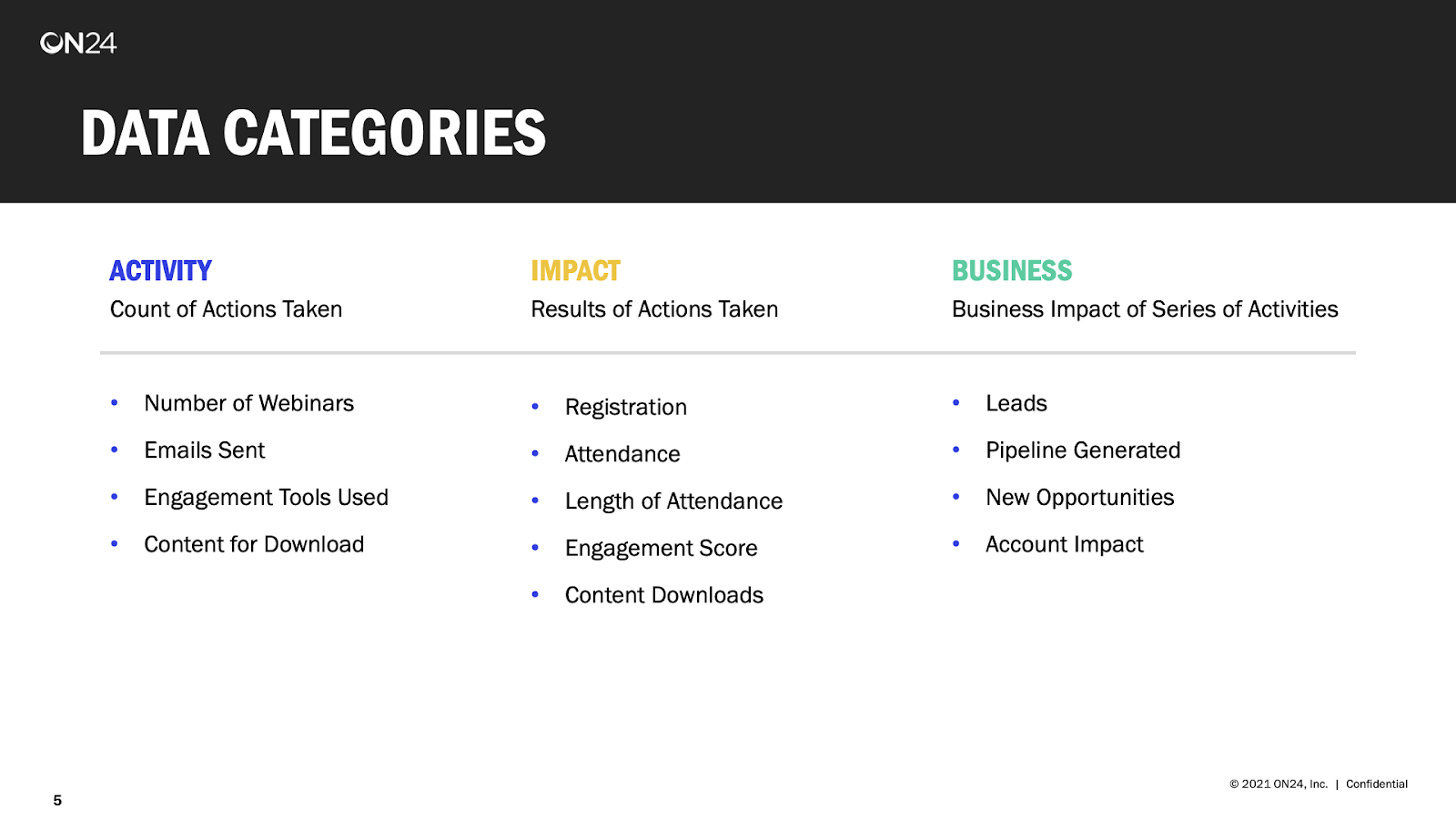Modern marketers need to master first-party data to optimize their marketing funnel. The reasons are plain enough to understand: regulators are restricting what can be done with third-party cookies and data, and major players, like Apple and Google, are leaning heavily into user privacy. An important question to also consider is: What are the types of first-party data?
So let’s take a quick look at why first-party data in marketing is so important and what marketers can do to understand its impact.
The Why Behind First-Party Data

First-party data offers marketers an ideal salve since it is based on both direct interactions with audiences and is captured on a company’s owned channel. The concept gives you direct permission to both collect data from a user and interact with them on a more human level.
This differs from third-party data, which is gathered from sources other than your organization. And while third-party data was essential for B2B marketing activity for the past several years, first-party data provides professionals with more opportunities to build relationships that actually matter.
What Types of First-Party Data Are There?

There are several ways to classify and understand the different types of first-party data. However, it helps to look at the types of first-party data through two primary lenses first. These are structured versus unstructured data.
Structured Data
Structured data can be easily understood as quantitative data. It comes in a consistent format and is standardized. This is the data that most marketers are comfortable with understanding and can most easily pull insights from.
Examples of structured data types can include the volume of website traffic, the number of webinar attendees, form fills and more. From these data types, insight can be gathered to understand conversion rates and data trends.
But not all structured data is created equal. There are varying metrics classifications within this data type. This isn’t to say that any type of data is better than another but it’s important to know the role that they play in your overall measurement strategy.

-
- Activity Metrics. These are the most fundamental forms of metrics. They are the count of the actions you take as a marketer – your output as a person and/or team. Sample metrics include the number of webinars run, number of emails sent, e-books written, etc.
- Impact Metrics. Impact metrics are the results of the actions you’ve taken. They demonstrate how audiences have responded or reacted to the actions you’ve taken. Sample metrics include registration, form fills, attendance, etc.
- Business Metrics. These are the metrics that are ultimately a compilation of several programs and impact metrics. This is showing marketing is impacting the business goals. These metrics include leads, pipeline, new opportunities, account impact, etc.

Unstructured Data
Unstructured data is information that isn’t in a consistent format. Text-based information and open-form responses are prime examples of unstructured data.
Unstructured data is harder for marketers to work with as it comes in various forms and can be difficult to synthesize at scale. Much of the unstructured data that marketers can gather needs to be compiled into a format that can drive specific outcomes or plays.
One way for marketers to overcome this challenge is to set out before an activity takes place how they will act on this unstructured data at the end of it. This means that it won’t be important to act or listen for every piece of unstructured data, but choose the ones that will be important and have a plan on how to act on it.
This could include questions received during an event — either in written format or verbally delivered. Capturing and unifying this data is difficult but it often provides great insight into a customer or buyer’s intentions.
Taking the Next Steps With First-Party Data

Now that you have a better understanding of the types of first party data, what do you do next?
Marketers have strived to become more data-driven. But often, they’re focusing on data that merely implies interest, rather than doubling down on actual signals from their customers and prospects.
First-party data is a critical component to understanding audiences and creating more impactful personalized experiences.
The first step in being more informed on marketing measurement is to understand the various data types – including the types of first party data.
Especially as more marketing moves digital, it is critical that marketers develop the skills to be able to understand and act on first-party data, especially unstructured.
